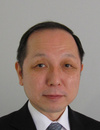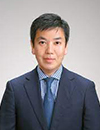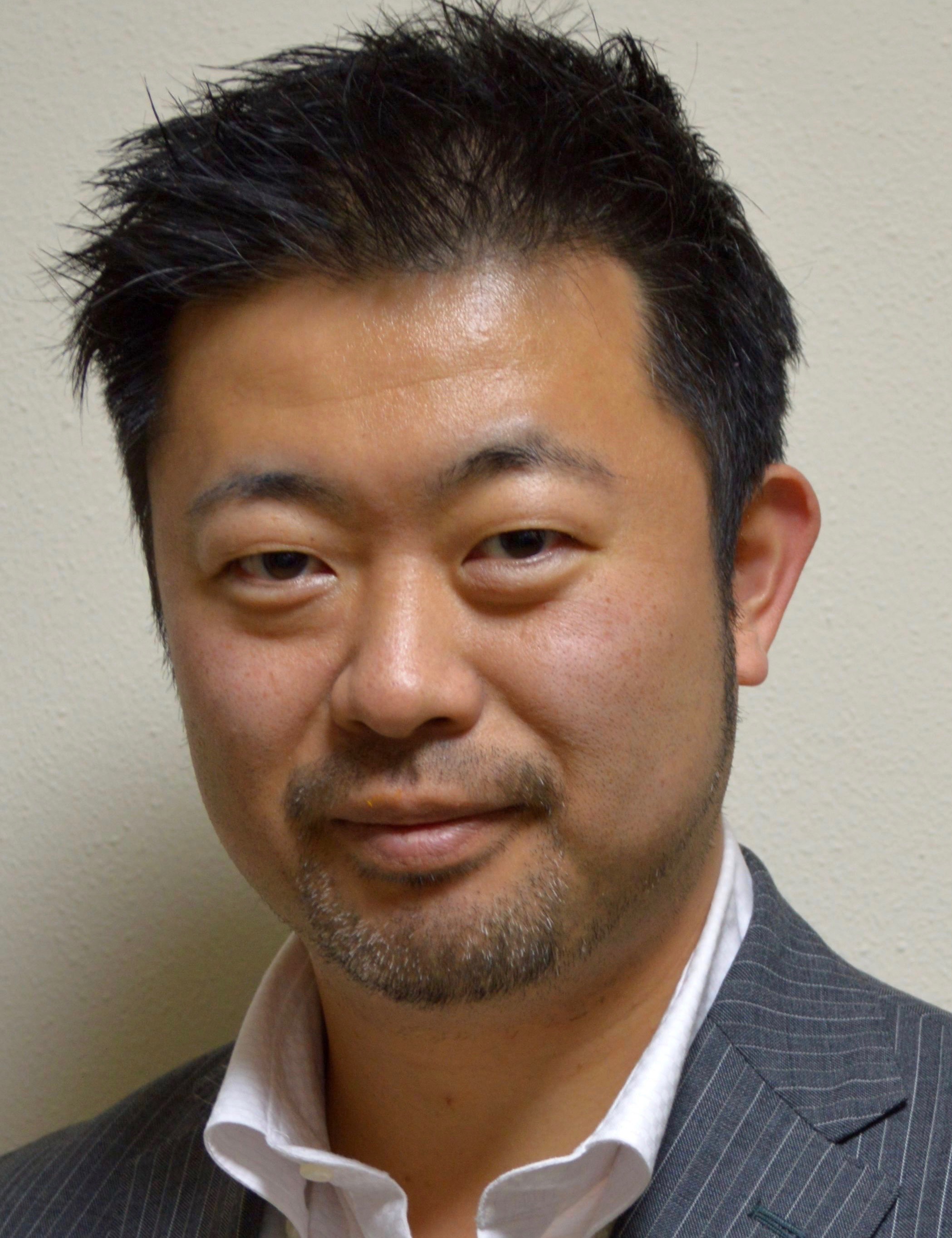08:00 | Morning Coffee and Tea Plus Networking |
|
Session Title: Organs-on-Chips 2019, Emerging Themes and Technologies |
| |
08:30 | Factors To Consider When Choosing Organoids As a Fit-For-Purpose Model
Terry Riss, Senior Product Manager, Cell Health, Promega Corporation, United States of America
There is a broad spectrum of 3D cell culture models available to perform biological research ranging from individual tumor spheroids to complex microfluidic representations of a human-on-a-chip. Choosing an appropriate model must include a consideration of exactly what you want to know at the end of the experiment, the capabilities of the model, the investment you are willing to make and the limitations of available assay technologies. We will provide an overview of factors to consider when choosing an appropriate model system that is driving to an increased use of organoids. |
09:00 | Reverse Bioengineering of Living Systems For Drug Discovery
Ken-ichiro Kamei, Associate Professor, Institute for Integrated Cell-Material Sciences (WPI-iCeMS), Kyoto University, Japan
One of the ultimate goals of bioengineering is to re-create natural living systems by means of synthetic biology and tissue engineering. The long-term mission of our laboratory is to recapitulate the in vivo physiology and pathology on a microfluidic device, such as “Body-on-a-Chip” (BoC) or “Microphysiological Systems” (MPSs). Indeed, OOC/MPSs exhibit great potential as alternatives for pre-clinical animal tests to assess drug efficacy and safety. Although several chips and systems have been reported in the last decade, there are still some important issues that need to be addressed; these include: 1) the use of functional tissue cells derived from human pluripotent stem cell (hPSC), 2) the alternatives of polydimethylsiloxane (PDMS) to prevent chemical absorption, and 3) the integration of in situ monitoring systems to monitor cellular responses. Here, our interdisciplinary approach of stem cell biology, material science, and micro/nano-engineering will be introduced to address the aforementioned issues involved in drug discovery and precision medicine. |
09:30 | Microphysiological Systems Based on Microfluidic Device For Pharmacokinetic Studies
Hiroshi Kimura, Professor, Micro/Nano Technology Center, Tokai University, Japan
In this presentation, we will present integrated microfluidic platforms, which allow precise control of the cell culture environment on Microphysiological systems. Maintenance and replication of physiological functions of cells cultured in vitro are extremely difficult in conventional cell-based assay methods during life science and medical applications. Microfluidics is an emerging technology with the potential to provide integrated environments for maintenance, control, and monitoring the environment around cells. We work mainly in fundamental technologies of microfluidic devices and systems, and their applications to biological sciences including Microphysiological systems. A physiological environment in vitro can be replicated by fabrication of microstructures and control of microfluidics in these devices. Moreover, functional components, such as sensors, valves and pump, can be integrated into the devices by microfabrication methods. We performed cell-based assays to evaluate the function of these devices. Because cells cultured in vitro could be maintained and measured, these devices may be applied to medical, pharmaceutical and biological sciences. |
10:00 | Morning Coffee and Tea Break Plus Networking |
10:30 | Fundamental Consideration Points For the Liver Organ-on-a-Chip
Seiichi Ishida, Section Chief, Division of Pharmacology, National Institute of Health Sciences, Japan
Hepatocytes, the main parenchymal cell in the liver, has many functions and is widely used in in vitro cell-based assays. However, maintaining their physiological function is not easy. Same is the case for hepatic stellate cells, which are involved in hepatic fibrosis. Reconstitution of complicated physiological structure of the liver is thought to be necessary to reproduce adequate hepatic functions in in vitro culture model. Liver organ-on-a-chip is expected to solve these difficulties. Fundamental consideration points for the construction of liver orga-on-a-chip are discussed, with the introductory description of basic liver physiology, in the presentation. |
11:00 | Engineering of a Vascularized 3D Cell Construct On-Chip Using Human iPSC-derived Cells
Yu-suke Torisawa, Associate Professor, Hakubi Center for Advanced Research, Kyoto University, Japan
Vascular networks are essential to maintain cellular viability and function; however, current 3D culture models lack vascular systems. Engineering perfusable vascular networks that can deliver reagents and blood cells to 3D cell constructs could be a powerful platform to recapitulate cellular microenvironments and tissue-level functions. We have developed a microfluidic method to form vascularized tissue-like cell constructs to model cellular interactions through blood vessels. When a tumor-like cell spheroid containing human umbilical vein endothelial cells (HUVECs) and fibroblasts was cultured in our microfluidic device, a perfusable vascular network was formed through the cancer spheroid. We confirmed that peripheral blood mononuclear cells can be perfused inside a cancer spheroid through a vascular network. Thus, we used this system to model the interaction between cancer cells and immune cells. To study the interaction between cytotoxic T cells and cancer cells thorough blood vessels, allo-reaction between endothelial cells and T cells by mismatching of their HLA will be problematic. Therefore, we engineered 3D vascular networks using human induced pluripotent stem cell-derived endothelial cells (hiPSC-ECs). CD8+ T cells primed by HUVECs exhibited higher cytotoxic activity toward HUVECs than autologous hiPSC-ECs and MHC class I KO-hiPSC-ECs, demonstrating the potential value of this vascularized cancer-on-a-chip for modeling the interaction between T cells and a tumor-like tissue through blood vessels. Generation of in vivo-like vascularized 3D cell constructs using hiPSC-ECs would provide a novel platform to develop organs-on-chips as well as human disease models. |
11:30 | On-Chip Vasculature for Engineering Three-Dimensional Cell Culture Environment of Spheroids and Organoids
Ryuji Yokokawa, Professor, Department of Micro Engineering, Kyoto University, Japan
In vivo, healthy vasculature has a hollow structure to supply oxygen and nutrients to tissues. However, tissues cultured in vitro frequently lack such functional vasculature, and thus result in a necrotic core of the cell aggregate. To extend the culture period of the three-dimensional tissue, perfusable vasculature is crucial. It will contribute not only to the long-term culture for regenerative applications of tissues but also to deepen our understanding of organ morphogenesis.
In this presentation, I will explain a method to use angiogenic sprouts to connect the inside of a tissue model, spheroid or organoid, with microfluidic channels via vessel. Three types of tissue models were used: co-cultured spheroids of hLFs and HUVECs, and tri-cultured spheroids of hLFs, HUVECs, and tumor cells, and kidney organoids. This enables us to perfuse the inside of spheroids to deliver oxygen and nutrients. Moreover, some preliminary evaluation of tumor growth and drug evaluation will be presented.
We have extended the on-chip vascular formation method to a three-dimensional spheroid containing tumor cells and kidney organoids. Although we successfully optimized conditions to induce sprouting toward the co-cultured spheroid and found the lumen formation, it was not readily applicable to other cell types. Therefore, we took advantage of the angiogenic factors from hLFs even in the tumor spheroid model for vascularization. Future work includes many applications such as a high-throughput assay for drug screening and a long-term culture of organoids for studying organogenesis. The model provides a new assay platform for the tissue-culture with vasculatures at in vivo-like high cell density. |
12:00 |  | Keynote Presentation Approaches to Wearable Microfluidic Sensor Devices for Well-Being and Personalized Healthcare
Martyn Boutelle, Professor of Biomedical Sensors Engineering, Imperial College London, United Kingdom
A new generation of portable, wearable biomedical devices is becoming possible through recent advances in microfluidic technologies, microelectronics, sensors and biosensors. Key to this integration is the phenomenal growth in mobile computing power provided by current tablets and mobile phones. Through miniaturization and carefully engineered smart designs we can embed computer control and analytical best practice into portable even wearable devices that are able to compensate for shortcomings such as falling performance. These hybrid microfluidic systems appear to their target users as simple stable systems that tell them what they want to know. My group specializes in designing and building such microfluidic systems to meet the needs of acute critical care medicine. Key molecular markers are measured using both optical and electrochemical sensors and biosensors. We then work with clinical care teams to show proof of concept of the real-time continuous chemical information that microfluidic systems can produce. Our ultimate goal is that such systems can be used to monitor patients and guide therapy in a patient-specific, personalized way. |
|
12:30 |  Overview of Promising Applications of Microfluidic Technologies: Organs-on-Chips, Sequencing, and Biotechnologies Overview of Promising Applications of Microfluidic Technologies: Organs-on-Chips, Sequencing, and Biotechnologies
Sébastien Clerc, Technology & Market Analyst, Microfluidics & Medical Technologies, Yole Développement
Microfluidics has plenty of applications, some of which are now established. However, new applications arise as the technology matures and open exciting possibilities in various fields. For example, organs-on-chips show promising results for toxicology and efficacy testing in the pharmaceutical and other industries. In the field of biotechnology, microfluidics are increasingly used to isolate, analyze and culture cells. DNA/RNA sequencing sounds like a more mature application, but recent technology improvements make it appear like this field is only in its infancy and that great things are coming next. In this talk, Sébastien Clerc will present an overview of microfluidic technologies for these three applications along with main market and technology trends.
|
13:00 | Networking Lunch, Exhibit and Poster Viewing |
|
Session Title: Innovations in Microfluidics Technologies and Applications |
| |
13:30 | Microfluidic Mass Production and Bio-Applications of Liquid Metal Nanoparticles
Shiyang Tang, Vice-Chancellor's Postdoctoral Research Fellow, School of Mechanical, Materials, Mechatronic and Biomedical Engineering, University of Wollongong, Australia
Functional nanoparticles comprised of liquid metals, such as eutectic gallium indium (EGaIn) and Galinstan, present exciting opportunities in the fields of flexible electronics, sensors, catalysts, and drug delivery systems. Methods used currently for producing liquid metal (LM) nanoparticles (NPs) have significant disadvantages as they rely on both bulky and expensive high-power sonication probe systems, and also generally require the use of small molecules bearing thiol groups to stabilize the nanoparticles. In addition, LM NPs in aqueous solutions tend to oxidize and precipitate over time, which hinders their utility in systems that require long-term stability. In this presentation, innovative microfluidics-enabled acoustic platforms are described as inexpensive, easily accessible methods for the on-chip mass production of bio-functional EGaIn nanoparticles with tunable size distributions in an aqueous medium. Several novel nanoparticle-stabilization approaches are demonstrated using polymer macromolecules such as brushed polyethylene glycol and poly(1-octadecene-alt-maleic anhydride), negating the requirements for thiol additives while imparting a “stealth” surface layer. Furthermore, a surface modification of the nanoparticles is demonstrated using galvanic replacement and conjugation with antibodies, and the application of such bio-functionalized LM NPs in positron-emission tomography imaging is demonstrated. It is envisioned that the developed microfluidic techniques and the produced liquid metal-based nanoparticles can enable a wide range of biomedical applications. |
14:00 | Microfluidic Preparation of Flexible Micro-Grippers with Precise Delivery Function
Yu Hao Geng, First Author, The State Key Lab of Chemical Engineering, Department of Chemical Engineering, Tsinghua University, China
We firstly propose a one-step preparation method of micro-gripper by using gas-liquid Janus emulsions and thermo-sensitive hydrogels, and then characterize the behavior of oriented and precise delivery. |
14:30 |  | Keynote Presentation Culture-Independent Method for Identification of Microbial Enzyme-Encoding Genes by Single-Cell Sequencing Using a Water-in-Oil Microdroplet Platform
Takashi Funatsu, Professor, University of Tokyo, Japan
Environmental microbes are a major source of industrially valuable enzymes with potent and unique catalytic activities. Unfortunately, the majority of microbes remain unculturable or difficult to cultivate and thus are not accessible by culture-based methods. Recently, culture-independent metagenomic approaches have been successfully applied, opening access to untapped genetic resources. Here we present a methodological approach for the identification of genes that encode metabolically active enzymes in environmental microbes in a culture-independent manner. Our method is based on activity-based single-cell sequencing, which focuses on microbial cells exhibiting specific enzymatic activities. First, environmental microbes were encapsulated in water-in-oil microdroplets with a fluorogenic substrate for the target enzyme to screen for microdroplets that contain microbially active cells at the single cell level. Second, the microbial cells were recovered and subjected to whole genome amplification. Finally, the amplified genomes were sequenced to identify the genes encoding target enzymes. This method was successfully used to identify 14 novel beta-glucosidase genes from uncultured bacterial cells in marine samples. Our method contributes to the screening and identification of genes encoding industrially valuable enzymes. |
|
15:00 | Microtechnologies For Immune Health Profiling In Type 2 Diabetes Mellitus
Han Wei Hou, Assistant Professor, School of Mechanical and Aerospace Engineering, Nanyang Technological University, Singapore
Metabolic disorders such as diabetes mellitus and cardiovascular diseases (CVD) are becoming the main public health challenges in Singapore and globally with rising premature morbidity and associated mortality, as well as escalating healthcare costs. In this talk, I will present our recent research efforts in the development of microfluidics technologies for “label-free” isolation and phenotyping of circulating leukocytes in type 2 DM (T2DM). We demonstrated that diabetic leukocytes exhibited significant immune dysfunctions which were well-associated with traditional CVD risk factors, clearly illustrating their potential as novel surrogate biomarkers for point-of-care testing. Overall, this multi-disciplinary research greatly facilitates rapid and quantitative analysis of immune and vascular health using liquid biopsy, with progress towards clinical diagnostics and precision medicine in the treatment of vascular dysfunctions. |
15:30 | On-the-Fly Optofluidic Imaging Platforms For Deep and Large-Scale Single-Cell Analysis
Kevin Tsia, Associate Professor, Department of Electrical & Electronic Engineering, The University of Hong Kong, Hong Kong
This talk will introduce our recently developed ultrafast optofluidic imaging techniques (multi-ATOM and FACED imaging) that practically allow ultralarge-scale single-cell imaging (>millions of adherent or suspended cells) in real-time with the unprecedented combination of imaging resolution and speed. These techniques generate multiple single-cell image contrasts from which not only deep single-cell biophysical and biomechanical phenotypic profiles can be obtained (based on quantitative phase and other label-free contrasts), but also biochemical signatures of single-cells (based on fluorescence contrast). Combined with high-performance computing hardware and high-throughput computational methods (particularly machine learning), their utilities in large-scale cell-based assays using cell-lines, in-vivo mouse models, as well as primary human cells (e.g. for circulating tumor cell detection, routine blood analysis, drug screen) will be discussed.
|
16:00 | High-Throughput Large-Droplet Sorting
Akihiro Isozaki, Researcher of Kanagawa Institute of Industrial Science and Technology (KISTEC) and Research Assistant Professor, University of Tokyo, Japan
Droplet microfluidics is an attractive tool for large-scale single-cell analysis. However, there is a trade-off between sorting throughput and droplet volume that is related to the incubational capacity of droplets. Our method allows us to overcome this trade-off and achieve high-throughput (~5,000 droplets/sec) large-droplet (0.1 nL) sorting. In this talk, I present the details of our method and its applications. |
16:30 |  | Keynote Presentation Medical Diagnosis and Gene Therapy Using Microfluidic Devices
Manabu Tokeshi, Professor, Hokkaido University, Japan
We are working on the development of microfluidic devices and their measurement systems for rapid diagnosis based on immunoassays, and are also challenging the microfluidic based lipid nanoparticles production for drug delivery systems. In this presentation, I will introduce those latest achievements and discuss the future prospects. |
|
17:00 | High-Throughput Raman Flow Cytometry
Kotaro Hiramatsu, Assistant Professor, The University of Tokyo, Japan
I present the development of a high-throughput (>2,000 cells/s) and broadband (400-1600 cm-1) Raman spectroscopic flow cytometry and its application to large-scale single-cell analyses of the astaxanthin productivity and photosynthetic dynamics of Haematococcus lacustris. |
17:30 |  | Keynote Presentation Conference Closing Keynote Presentation: Quantum Diagnostics - From Single-Cells to Single-Molecules
Dino Di Carlo, Armond and Elena Hairapetian Chair in Engineering and Medicine, Professor and Vice Chair of Bioengineering, University of California-Los Angeles, United States of America
The ultimate limits of diagnostics in biology are the “quantum” units that convey information, e.g. single nucleic acids, proteins, and cells. Microfluidics has emerged as a powerful tool to compartmentalize single cells and molecules into sub-nanoliter droplets as individual bioreactors to enable sensitive detection and analysis down to this quantum limit. However, the current systems for quantum diagnostics have not been widely adopted, partly due to the requirement of specialized instruments and microfluidic chips to generate uniform droplets and perform adequate manipulations. I will discuss the platforms we are developing to fractionate volumes in simplified, instrument-free ways using 3D-shaped microparticles. Each “lab-on-a-particle” can be analyzed using widely available flow cytometers. These new lab-on-a-particle reagents eliminate the need for specialized new equipment for microfluidic compartmentalization and readout and promise to democratize single-molecule and single-cell technologies. |
|
18:00 | Close of Conference |










